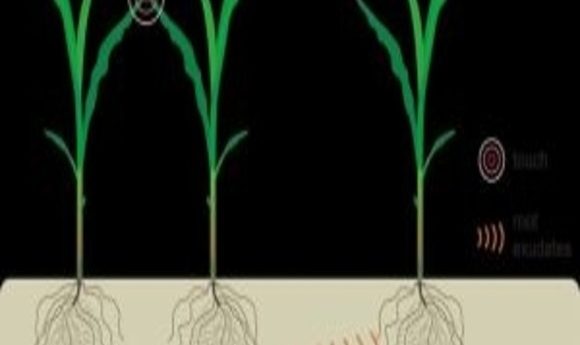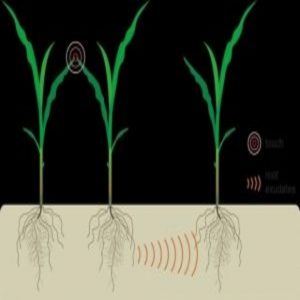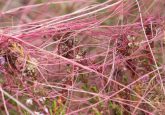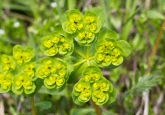How plants talk

The roots of communication between plants lie in chemical secretions.

The mechanisms of above-ground interactions on below-ground communications between neighboring plants. Credit: Elhakeem et al.
A recent study, conducted by a team of scientists from the Swedish University of Agricultural Sciences (Uppsala, Sweden), has shown that plants communicate with their neighbors through chemical secretions from their roots.
The team utilized corn seedlings in their study, which grow more rapidly in stressful situations. They discovered that brief interactions above-ground between plants, such as the brushing of leaves, can provoke responses in neighboring plants that haven’t been touched. These responses were determined to be the result of chemical secretions between the roots of nearby plants and prompted more aggressive growth.
“If we have a problem with our neighbors, we can move flat,” commented Velemir Ninkovic, lead author of the study. “Plants can’t do that. They’ve accepted that and they use signals to avoid competing situations and to prepare for future competition.”
Previous studies have shown how plants adjust to touch stimuli, altering their growing strategies when they are brushed by neighboring plants to avoid competition in crowded conditions, including shifting resources from root growth to above-ground growth to expand more rapidly.
The new study provides the evidence that not only do plants respond to touch from other plants, but also to chemical secretions. The researchers elicited a response in the plant by use of a make-up brush to stroke the leaves for a minute each day.
When they removed the plant and replaced it with a new one, they discovered the new plant also shifted its resources to growing more leaves and fewer roots. The same response was not received when new plants were placed to grow where previously untouched plants had been hosted.
Scientists are only just touching the surface of the complexity of plant communication, with another study from recent years revealing a network of fungi between plant roots to warn when aphid attacks are impending and to detect whether they are a neighbor to family or strangers.





